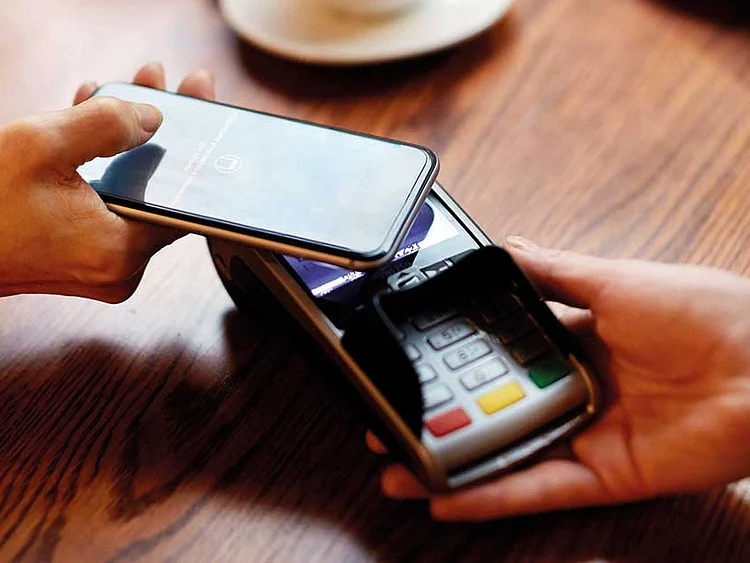Going cashless this pandemic: Opt for touchless payments to avoid paper money and thieves
With COVID-19, hygiene and safety may be the best reasons for using contactless payments

Also In This Package
UAE expats: Cheaper to remit at my bank or an exchange?
Cash, debit or credit cards: How to choose in COVID-19?
UAE: How much can gratuity boost retirement savings?
UAE: How Sharia-compliant credit cards help save more
UAE: Stay clear of these car, health insurance scams!
UAE: 7 debt mistakes to avoid during COVID-19
If you're looking for a self-improvement task in this pandemic era, try teaching yourself to use contactless payments with your phone or “tap-to-pay” credit and debit cards. Any germaphobe will tell you that the surfaces of bills and coins have always been gross. And handing your credit card to a cashier who has the sniffles and a hacking cough? Even in pre-pandemic times, also gross.
Now, COVID-19 has prompted health regulators to advise using touchless payments whenever possible in the brick-and-mortar world. People have been relatively slow to adopt touch-free payments even though they're more convenient and secure than swiping credit and debit cards. But maybe hygiene will be the tipping point as people seek a solution for, well, yucky money.
Also Read
UAE: Five key risks experts remind to be aware of when going cashless in a pandemic!UAE: What to do if you've lost your job but don’t have any money saved upFancy the high life? Here’s a list of some elite-status credit cards and their perks!How the pandemic has redefined your financial goalsPandemic accelerates cashless move
“I think the pandemic is a strong impetus to change,” said Jodie Kelley, CEO of the Electronic Transactions Association, a global trade association for the payments technology industry. “I think it's going to stick and accelerate further. As people get used to it and understand how to do it and find that it's simple and convenient, then they're not going to shift back.”
Consumer interest in contactless payments has spiked during the pandemic
According to study done by Visa, 9 out of 10 consumers in the UAE have changed how they pay due to COVID-19, including shopping online when possible (59 per cent), using contactless payments (52 per cent) and not using cash as much (40 per cent). The study further showed that over two in five of local SMEs now have contact payments in place after the pandemic broke out, and forced businesses to make changes in the way they connected with customers. And three in five even said they stopped accepting cash during the pandemic.
Learning to use contactless payments might be awkward at first, and some of your favorite retailers might not be equipped to accept them. The point is to give it a shot the next time you're not in a rush in a checkout line that can handle contactless payments. “The first time I went to pay with my phone, I didn't quite know how to do it,” Kelley said. “I felt a little silly trying to figure it out. But once I figured it out, I loved it.”
Growing trend to pay by taping
True, the word ‘tap’ doesn't exactly scream contactless. But ‘tap to pay’ credit and debit cards really only need to be within a couple of inches of the payment terminal. The cards have little antennas inside. How to tell if your payment card has contactless capability? It will have a logo that looks like a sideways Wi-Fi symbol of radiating waves. Retail payment terminals that accept contactless payments have the same symbol.
These cards don't require a smartphone to complete a contactless payment, and you don't have to use a PIN. Nine of the top 10 credit card issuers are actively distributing new contactless cards to customers, Visa has said. “For people who are not used to engaging with technology, I would say first look at your card, see if it has the symbol. And if it does, the next time you're at a retail location, all you have to do is touch that card to the terminal,” Kelley said. “It is incredibly straightforward. I encourage people to try it.”
Also Read
With cashless payments booming this pandemic, is it time to shift to e-payments?Nearly half of UAE shoppers will stick with online shopping, says Standard Chartered pollWhy cashless payment is catching on in UAEklip digital cash now live with First Abu Dhabi Bank, Mashreq and National Bank of FujairahGoing contactless with smartphone payments
With this option, you call up your wallet app and hold your phone near the terminal, and your phone will ask for authentication. That's the normal unlocking procedure with your phone, whether punching in a code or using thumbprint or face identification. Many smartwatches work, too, as long as they have the required technology, called NFC, or near-field communication. The most popular services are Apple Pay, Google Pay and Samsung Pay.
Phone payments require a little prep work before you get to the checkout counter. First, you must enter your payment card information into your mobile wallet app. Then, the card is saved and available to use.
Questioning the security of such payments?
As you beam your next payment to a retailer's checkout terminal, you might wonder, “Will I have my credit card number stolen?” The nontechnical answer is that it's safer than the old method of swiping your card. That's because the card or phone sends encrypted payment information to the terminal - it essentially masks your real credit card number. Even if the payment information was intercepted, it would be useless to a thief.
“It's an incredibly safe way to pay,” Kelley said. These days, in more ways than one.
Sign up for the Daily Briefing
Get the latest news and updates straight to your inbox
Network Links
GN StoreDownload our app
© Al Nisr Publishing LLC 2025. All rights reserved.